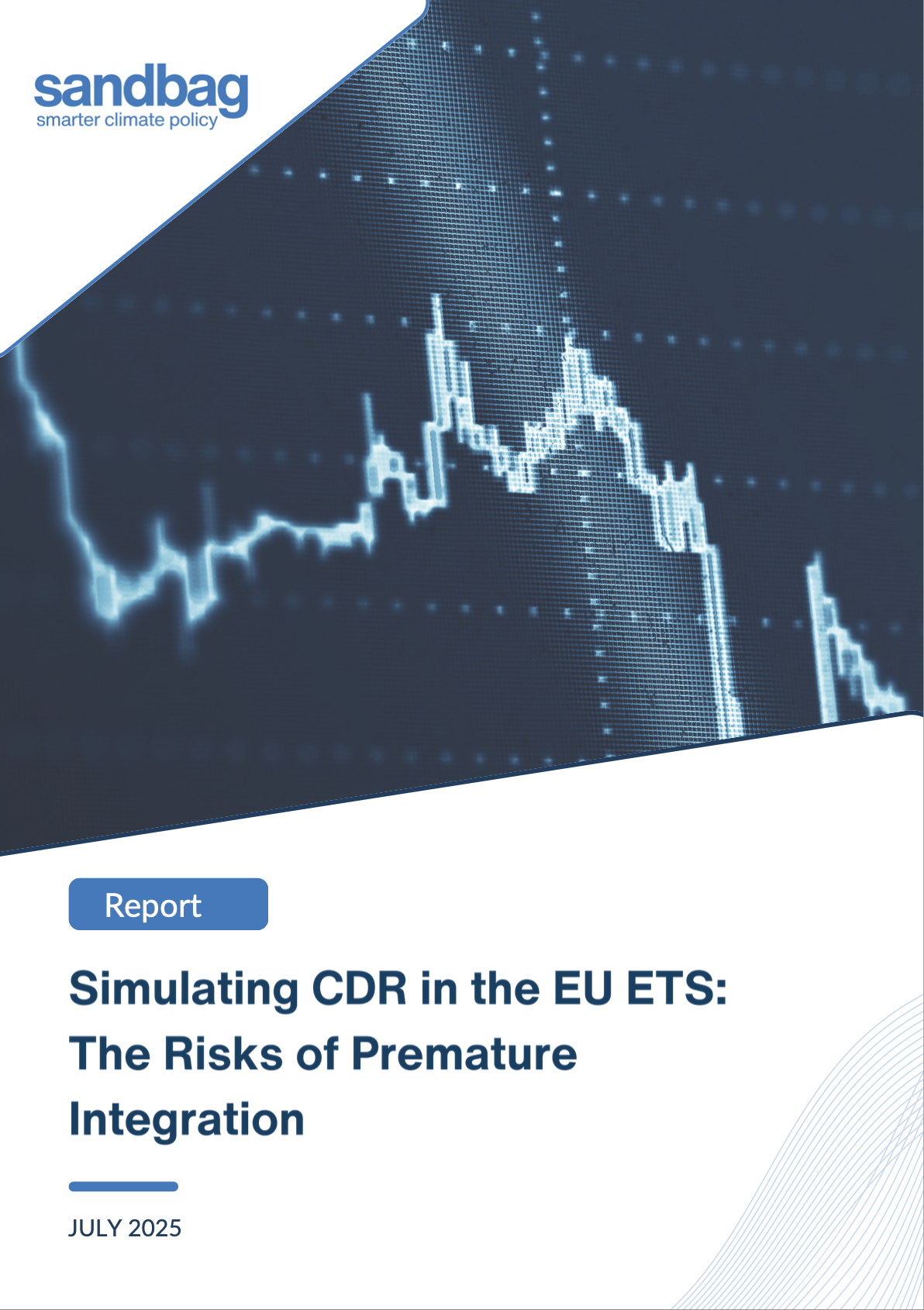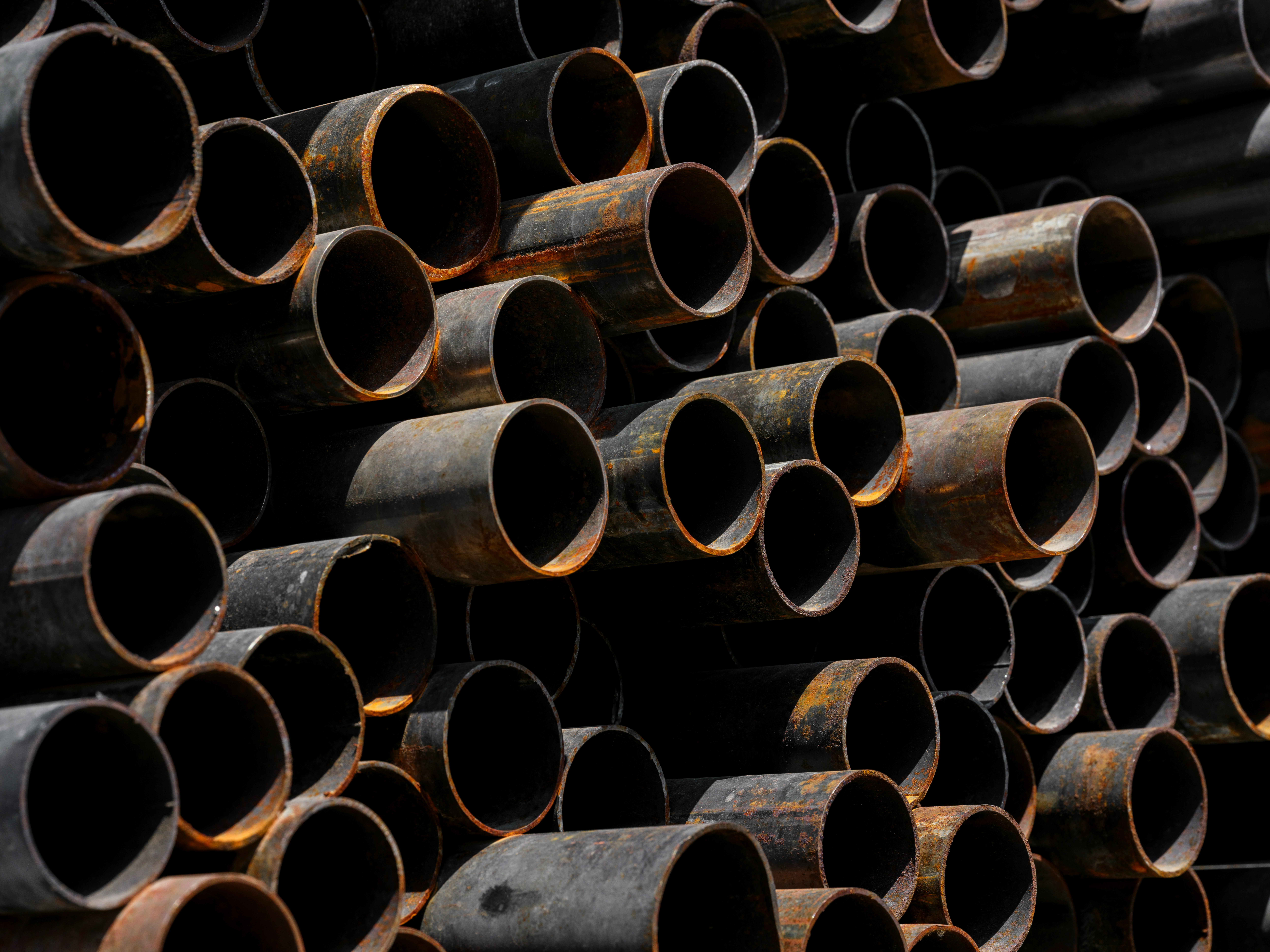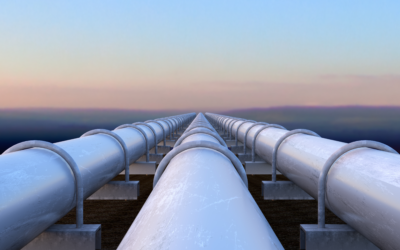The European Commission has signalled in its communication on the EU’s 2040 targets that it “envisages to provide for domestic permanent carbon removals in the EU ETS”. This raises several questions: How might CDR be integrated into the EU ETS? What types of removals should be eligible, and under what conditions? And what would the environmental and market implications be? Do the risks outweigh the benefits?
This report introduces Sandbag’s ETS + CDR simulator, a tool designed to explore these questions through scenario modelling, and presents our key findings to inform the ongoing debate.

About the report
Sandbag has developed an ‘ETS + CDR simulator’ to help visualise and explore the impact that CDR integration could have on the ETS, assess the demand it could create for CDR, and highlight the potential consequences of this demand. This report uses the simulator to explore how different integration pathways could affect emissions reductions, carbon prices, and potentially lead to negative externalities. We also highlight alternative policies for developing CDR.
Key findings
CDR integration is not necessary for the ETS to function during the 2030s.
Our simulator shows a small surplus of 157m EUAs in 2040 (if the S3 emission reduction scenario from the 2040 target Impact Assessment is followed).
CDR could displace essential near-term abatement.
If CDR enters the ETS, while a net cap is maintained, especially if introduced without quantity limits, with emission reduction deterrence up to 1.8 GtCO2 with the current cap.
Even with a ‘one in-one out’ gross cap, cheaper removal options are still likely to be over-incentivised .
The cheapest methods of CDR rely on biomass, potentially leading to unintended impacts on land-use, biodiversity, and food security. We estimate up to 22 EJ of biomass demand could be created by CDR credits entering the ETS under a gross cap.
Key CDR technologies (i.e. DACCS) are not expected to be cost-competitive throughout the 2030s .
This means they would either not be incentivised or would require separate subsidy frameworks (e.g. CCfDs), which the ETS is not designed to support, would be very costly (up to €11 bln between 2031-40 with the current cap) and would distort price signals in the ETS.
A centralised intermediary institution attempting to manage CDR supply into the ETS would have an extremely challenging remit.
Such an institution could also become an administrative and political liability, lacking in accountability, or open to influence from vested interests.
To inform EU policy on carbon removals, Sandbag’s latest technical brief uses a new ETS + CDR simulator to assess the risks of premature integration — highlighting why early inclusion of CDR in the EU ETS could undermine emissions reductions, distort price signals, and over-incentivise unproven technologies.
Photo by Valeriya Luzina.
In the news
-
Carbon Pulse, 9 July 2025: Carbon removals risk undermining EU ETS if included post-2030, says think tank.
In its latest report, Sandbag warns that integrating carbon dioxide removals (CDR) into the EU Emissions Trading System too early could displace near-term mitigation, distort price signals, and over-incentivise unproven technologies.
Read the article (subscription required) - Montel News, 1 September 2025: Analysts welcome EC ideas for carbon removal fund by 2030.
“We recognise the need for an EU removals fund in the short term to develop the technology, demonstrate real net removal benefits and increase confidence in CDR,” said Duncan Woods, industrial decarbonisation analyst at think tank Sandbag.
Read the article
Related publications
A closer look at 2023 emissions: steelmaking caused a quarter of industry pollution
This brief analyses 2023 emissions under the EU Emissions Trading System (EU ETS), using the latest data available from the EU Transaction Log (EUTL) . It particularly focuses on the iron and steel sector.
Feedback on the inclusion of permanent CCU in the EU ETS
We welcome the opportunity to provide feedback on the draft delegated regulation published by the...
Supply and demand in the EU ETS: It’s the hydrogen, stupid!
Learn about the supply and demand balance of the EU ETS through the end of its fourth phase in 2030, based on the latest market data and policy parameters. Are the results aligned with the EU’s target of a 55% reduction in emissions?



